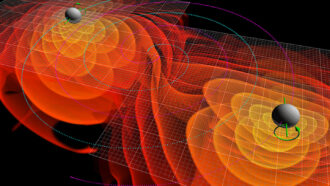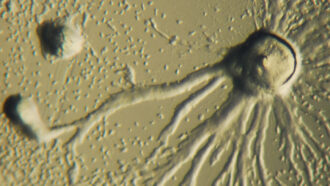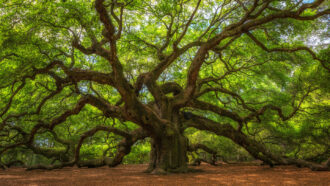
James Riordon is a freelance science writer who covers physics, math and astronomy, and coauthor of the book Ghost Particle – In Search of the Elusive and Mysterious Neutrino.

Trustworthy journalism comes at a price.
Scientists and journalists share a core belief in questioning, observing and verifying to reach the truth. Science News reports on crucial research and discovery across science disciplines. We need your financial support to make it happen – every contribution makes a difference.
All Stories by James R. Riordon
-
 Physics
PhysicsTwo black holes merged despite being born far apart in space
A closer look at gravitational wave data reveals 10 overlooked mergers, including one between black holes that probably found each other late in life.
-
 Health & Medicine
Health & MedicineTiny amoebas move faster when carrying cargo than without
A new study of the carrying capacity of single-celled amoebas may help scientists develop mini “trucks” to precisely target disease in the human body.
-
 Physics
PhysicsWhy even small sonic booms are more annoying in cities
Quieter sonic booms from next-generation planes could still be annoying in cities thanks to narrow streets and tall buildings, simulations suggest.
-
 Science & Society
Science & SocietyGrowing wildfire threats loom over the birthplace of the atomic bomb
Climate change is expected to make wildfires worse across much of the Southwest United States. A key nuclear weapons lab could be in the hot zone.
-
 Health & Medicine
Health & MedicineHow to wash chicken in the kitchen more safely, according to physics
Despite the advice of health experts, most people who cook chicken at home wash it. New research offers ways to reduce spreading dangerous germs.
-
 Plants
PlantsLeonardo da Vinci’s rule for how trees branch was close, but wrong
An update to da Vinci’s elegant, 500-year-old “rule of trees” offers a powerful, new way to describe the structure of almost any leafy tree.